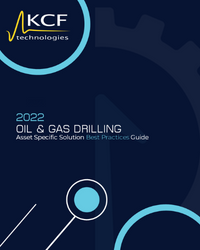Optimize Your Drilling Performance in 2022
Table of Contents
$1,118,573,089.29
Customer Savings
3,287
Downtime Hours Saved
15,764
Assets Monitored
Debris in Mud Pumps
The Problem
Mud pumps are positive displacement pumps that supply mud to the wellbore when drilling a well.
This piece of equipment is essential in delivering mud from surface to downhole. A common problem with drilling mud is the possibility of it containing debris. Once this debris is introduced to the fluid end of the mud pumps it causes the potential of catastrophic failure. This can result in multiple hours of downtime & maintenance costs.
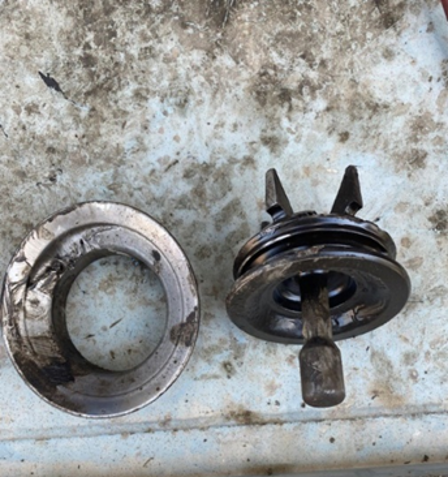
Cost of Asset Failures
- $2,500/hour Downtime Cost
- $55,000 Replacement
Savings Potential
- $5,000/month at 2 Hours of Downtime/Month
- $9,200/month to replace one full fluid end module every six months
Asset Blind Spots
There are several inherent challenges related to monitoring mud pumps.
Vibration frequencies are often undetectable to the human ear and eye.
High-rate pumping and other conditions, such as debris being present in the mud, must be identified as the root cause of the problem.
Data collection timing is critical when changes in operations and job design are made.
A New Approach to Monitoring Debris in Mud Pumps
The old way of fixing this issue was to run the fluid end until catastrophic failure, when a module fully washes out, or until the valves and seats cut.
This is not optimal. By employing the KCF Technologies Machine Health Platform, equipment issues can be addressed before failure using real-time, continuous monitoring. Predicting future failures allows you to solve these problems at a lower cost and without unplanned downtime.
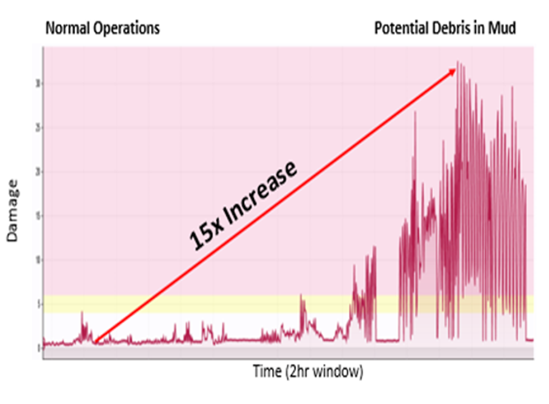
Hardware
- Each fluid end will have 6 total sensors, with 3 on fluid end manifold and 1 on each liner, inside the modules
- Base Station v4 will be used to relay sensor data to SMARTdiagnostics
Software
- Threshold Settings
- Indicators
- Sensor configuration
- Dashboards
- Reporting
Customer Inputs
- Sharing of Real-Time Operation Status
- Schematics of equipment and pump setup
- Access to Maintenance Logs
Training
- Sentry weekly/monthly site visits
- Sentry in-person training
- KCF Academy
- Customer training and handbooks
- Asset playbook
LCM Pill Impact in Mud Pumps
The Problem
Lost circulation material (LCM) is commonly pumped downhole to mitigate mud loss & prevent the flow of drilling fluid into a weak or fractured formation.
When drilling a well, it is very common for lost circulation material to be utilized. When the LCM is introduced to the fluid end, there is a dramatic spike in vibration. This LCM can cause a lot of damage to the internals of the fluid end, causing them to fail prematurely.
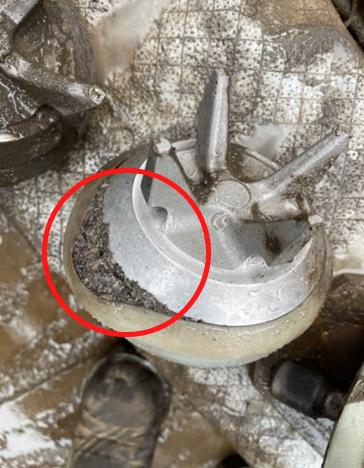
Cost of Asset Failures
- $2,500/hour Downtime Cost
- 1-2 hours Downtime
- $18,000 Replacement
Savings Potential
- $5,000/month for 2 hours of downtime
- $3,000/month for 1 fluid end module replacement every 6 months.
Asset Blind Spots
There are several inherent challenges related to monitoring LCM Impact in Mud Pumps.
Vibration frequencies are often undetectable by the human ear and eye.
High-rate pumping and other conditions, such as debris being present in the mud, must be identified as the root cause of the problem.
Data collection timing is critical when changes in operations and job design are made.
A New Approach to Mud Pumps for LCM Pill Impact
The old way of fixing this issue was to run the fluid end until catastrophic failure, when a module fully washes out, or until the valves and seats cut.
This is not optimal. By employing the KCF Technologies Machine Health Platform, equipment issues can be addressed before failure using real-time, continuous monitoring. Predicting future failures allows you to solve these problems at a lower cost and without unplanned downtime.
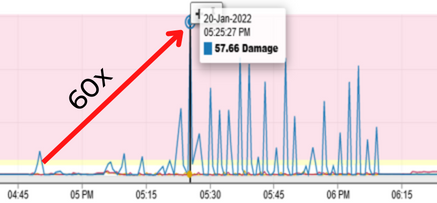
Hardware
- Each fluid end will have 6 total sensors, with 3 on fluid end manifold and 1 on each liner, inside the modules
- Base Station v4 will be used to relay sensor data to SMARTdiagnostics
Software
- Threshold settings
- Indicators
- Sensor configuration
- Dashboards
- Reporting
Customer Input
- Sharing of Real-Time Operation Status
- Schematics of equipment and pump setup
- Access to Maintenance Logs
Training
- Sentry weekly/monthly site visits
- Sentry in-person training
- KCF Academy
- Customer training and handbooks
- Asset playbook
Mud Pumps - Fluid End Module
Mud pumps are positive displacement pumps that supply mud to the wellbore when drilling a well. Traditionally, mud pumps used in drilling operations are Triplex mud pumps, containing 3 modules, per pump.
A common problem with mud pumps is the catastrophic failure of fluid end modules. Once a module fails it is no longer able to be used and that entire mud pump must be taken offline. This can result in multiple hours of downtime & maintenance costs.
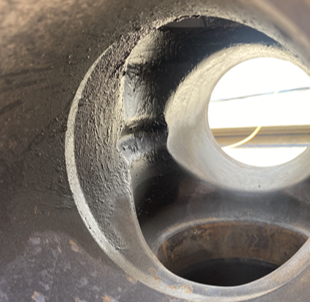
Cost of Asset Failures
- $15,000/Module
- $3,000/hour Downtime Cost
- 12-16 hours Downtime
- Potential SSHE Risk
Industry Savings Potential
- $30,000/Failure at 10 Hours of Downtime per Failure
- $13,500/module
ASSET BLIND SPOTS
There are several inherent challenges related to monitoring Mud Pumps.
Vibration frequencies are often undetectable by the human eye and ear.
High-rate pumping and other conditions, such as impending module failure, must be identified as the root cause of the problem.
Data collection timing is critical when operations and job design changes are made.
A New Approach to Fluid End Modules
The old way of fixing this issue was to run the fluid end module until catastrophic failure, and perform maintenance afterwards.
This is not optimal. By employing the KCF Technologies Machine Health Platform, Utilizing Sentry Services, equipment issues can be addressed before failure using real-time, continuous monitoring. Predicting future failures allows you to solve these problems at a lower cost and without unplanned downtime.
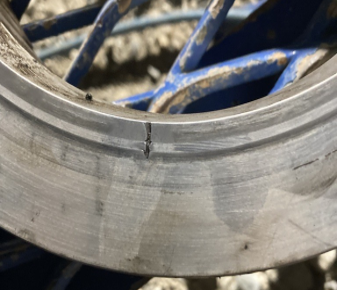
Hardware
- Fluid End will have 6 total sensors
- 3 on the Fluid End Manifold
- 1 on each Liner, inside the Modules
- Base Station gateway to relay sensor data to SMARTdiagnostics
Software
- Threshold Settings
- Indicators
- Sensor Configurations
- Dashboards
- Reporting
Customer Inputs
- Sharing of real-time operation status
- Schematics of equipment and pump setup
- Access to maintenance logs
Training
- Sentry weekly or monthly site visits
- In-person Training and KCF Academy virtual training
- Asset Playbook
I am excited to drive continuous improvement in partnership with you, find new efficiencies, take on complex challenges, and decrease downtime across the upstream oil & gas space while making your team's work-life safer and more productive. Please contact me to discuss your unique asset challenges!


